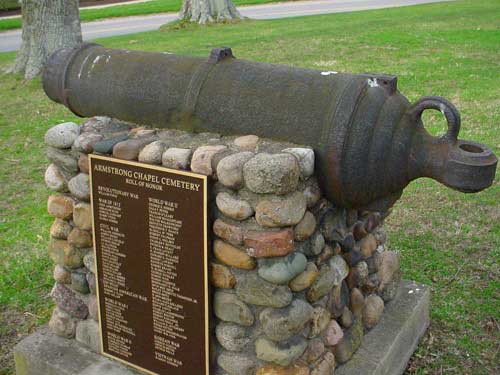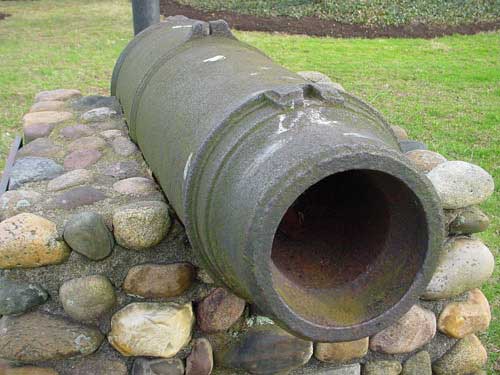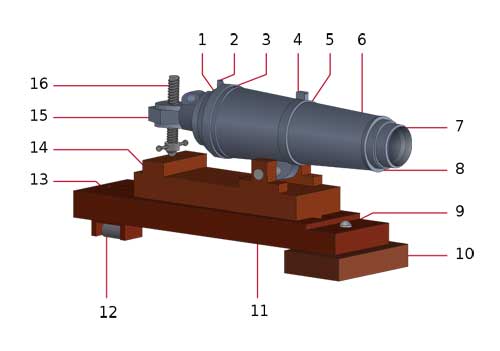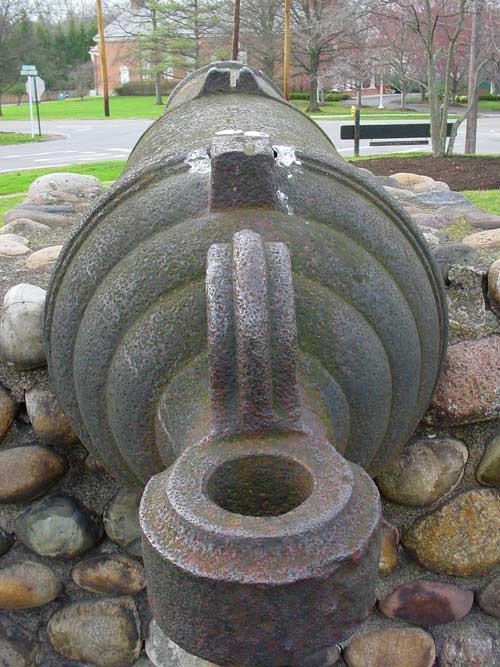Carronades were a product of a Scottish iron maker around the end of the 18th Century. They were developed by the Carron Company, built along the banks of the River Carron in Falkirk, Scotland. Still in business today as Carron Phoenix, at one time it was the largest iron works in Europe. The company supplied cannon to the British Government, initially suffering in quality, but finally improving so much that the Duke of Wellington said in 1812 that he wanted no other cannon for his troops.

Produced between 1778 thru the 1850's, carrondades were characterized by their lighter weight, lower powder charge and shorter barrels. They were used much like howitzers, to produce jagged splintery holes in the decks of ships, causing maximum grief to the crew. Lots of them could be stuffed on a ship compared to conventional cannon and were initially popular on warships. The British Navy called them the "smasher". They were used a lot in the war of 1812 by both sides. The guns short range soon became a liability and the Royal Navy and others soon abandoned them. They remained popular on merchant ships for protection, because of their lighter weight and smaller appetite, as room on a freighter was at a premium.

Carronades mainly fired round solid shot or canister. Canistor consists of numerous smaller iron balls, which made them giant murderous shotguns. They had a unique mounting system where a loop on the underside of the barrel attaches to the carriage, and the rear of the carriage itself could be swung from side to side quickly. They also had a threaded rod through the rear cascabel for quick elevation adjustments. A curious enlarged false muzzle could have been for easier loading or possibly to catch unburned powder from such a short barrel.

KEY: 1 Bolt 2 Aft sight 3 Vent hole 4 Front sight 5 First reinforce ring 6 Barrel 7 Muzzle 8 Second reinforce ring 9 Horizontal rotation axis 10 Chock 11 Vertical rotation axis 12 Wheel 13 Mobile pedestal 14 Carriage 15 Pommel 16 Elevation thread
This carronade was found in the Armstrong Chapel Cemetery in Indian Hill, a suburb of Cincinnati, Ohio.


